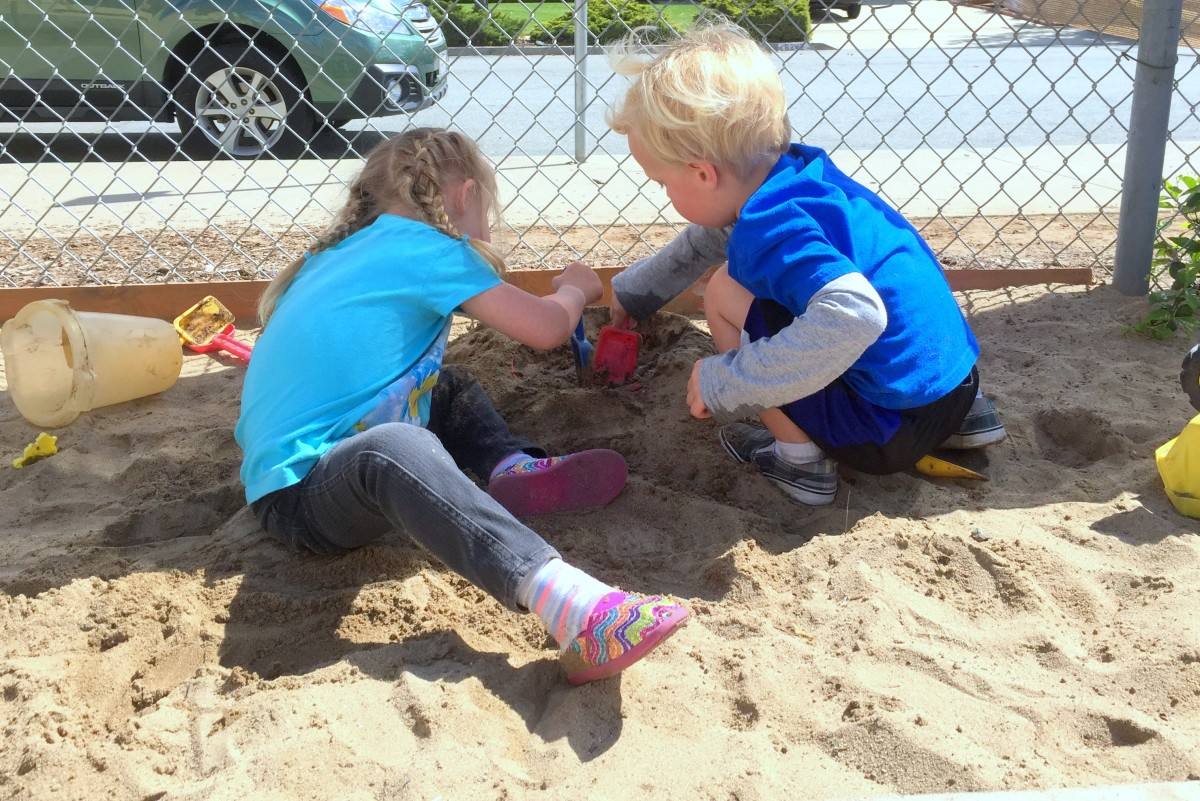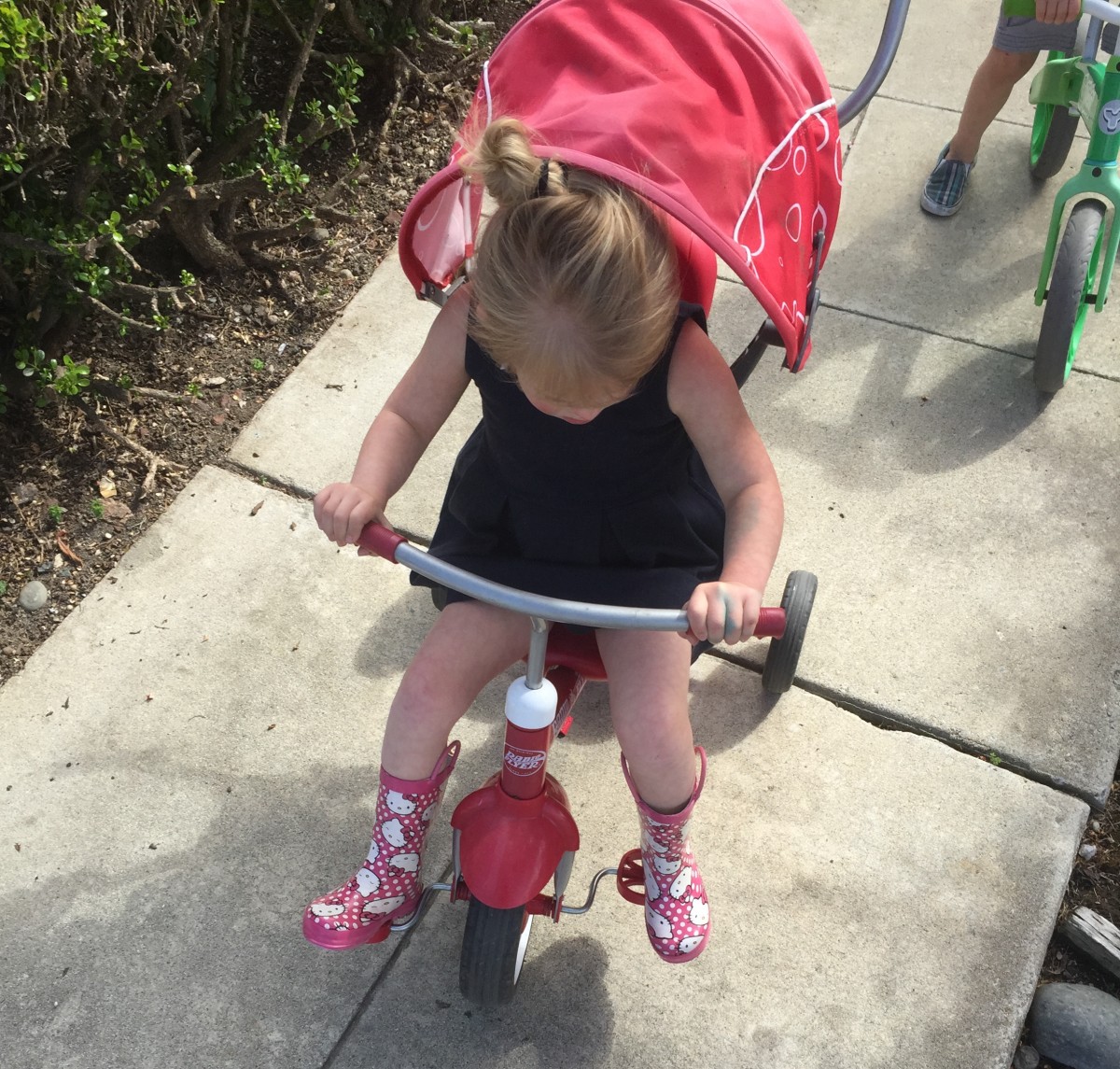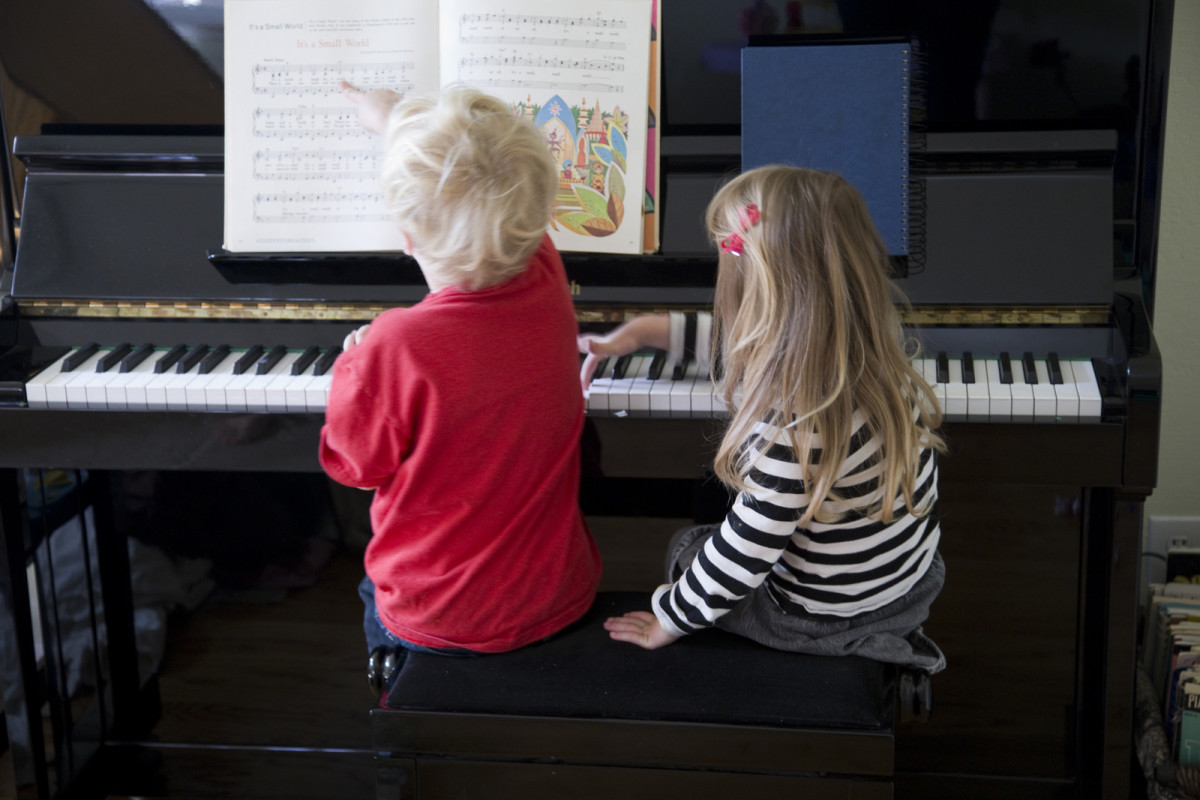Free Appropriate Public Education: Preparing for Kindergarten
With Whitney on the verge of Kindergarten we’ve had to put on some serious pants and think through the education considerations ahead. Decisions will have to be made, services likely advocated for, and all about a future that we cannot foresee. This is tough stuff, friends.
I suppose education decisions are something all parents have to go through: public or private? or home school? teachers, friends, location, cost, schedule, philosophy…all of it matters. Our hopes for Whitney’s future are for her to be as independent in society as possible…that she will have meaningful relationships, a job, and potentially higher education depending on her interests. Her school experience will dominate her time for the next 13 or so years…that’s a big deal! It will be one of (if not) the biggest influences for not only her academic development but also social.
Here are some of the considerations we’ve had while projecting for next year…(warning: long post, lots of detail…probably not for everyone)
Kindergarten Readiness
Our district passes out a Handbook for Kindergarten Readiness. Whitney has been going to “school” of some sort for almost four years now. She was just a baby when we started working on helping her development along. She has benefited greatly from Early Intervention services and has had a great foundation laid for functioning within a classroom setting. She’s verbal – speaks in sentences and sings and dances along with songs. She can stay attentive to a task for long periods of time – watching or copying an adult or peer or on her own such as leafing through books or playing with dolls. She knows her capital letters and numbers to 10, she can spell her name (and sometimes write it approximately). She anticipates routines and gets ready for what’s next. She can ride a tricycle and throw balls and take turns. She is helpful at home and will clear her dish with little prompting, fold pants or put away clothes and toys, she’ll help herself to snacks and sometimes use the potty on her own and choose and put on her own clothes (although backwards half the time). These are all pretty big deals – big steps for a kid who has her own developmental schedule that requires a lot of practice to master new skills. I’m so proud of her! Yet Kindergarten is a huge jump – all day school with lots of expectations. When it comes to sending Whitney off to Kindergarten I know there are areas where she’s not quite ready. I am concerned about potty accidents, getting bumped off a play structure, missing the directions (or not understanding) but not realizing or asking for help, deciding to escape the classroom, foraging other kids’ snacks and putting her mouth on the dirty drinking fountain, and having trouble with questions (when I ask her what did you do at school today? often her answer is Teacher Michelle – the “who” of school, not the “what”). Maybe the summer will see her make strides in some areas, but maybe not. Either way this is a huge step for Whitney (and myself as a mom!), I’m so proud of her and so nervous at the same time.
FAPE: Free Appropriate Public Education in the Least Restrictive Environment (LRE)
These are the buzz phrases for special education. By law (also see here), students with disabilities are entitled to a Free Appropriate Public Education in the Least Restrictive Environment (defined here). Specifically what these words mean for each individual is debatable, and technically something that both the parents and the school districts work together to determine (although I hear that often it’s a challenge to get those parties on the same page).
Whitney is currently being assessed by the district to help them determine their recommendation for her placement and services for next year. Her teacher, the specialists, and the district psych and program manager all weigh in toward this recommendation as well as toward what goals are appropriate for her (her IEP – Individualized Education Plan). The vast majority of opinions from the Down Syndrome side (see here and here for example) show that inclusion (being in a typical classroom with appropriate supports) is a favorable option for most kids with Down syndrome. Studies (like this one) have shown students having better performance, language skills, and social skills after having been educated along with their typical peers in comparison to a special class. Successful inclusion requires strategies (see here) to make the environment a place where students of such a range of abilities can learn, you can’t just throw kids with differing abilities into a typical classroom and wait to see if they sink or swim.
The US department of Education states:
Students with disabilities and students without disabilities must be placed in the same setting, to the maximum extent appropriate to the education needs of the students with disabilities. A recipient of ED funds must place a person with a disability in the regular education environment, unless it is demonstrated by the recipient that the student’s needs cannot be met satisfactorily with the use of supplementary aids and services. Students with disabilities must participate with nondisabled students in both academic and nonacademic services, including meals, recess, and physical education, to the maximum extent appropriate to their individual needs.
Inclusion sounds like a no-brainer, right? Well, not exactly. I follow an online collection of parents of kids with Down syndrome who frequently post about IEPs and school districts (among many other things). The general sense I get is that parents feel that most school districts are protective of their resources and hesitant toward inclusion (having kids with Down syndrome mainstreamed with their peers in a typical classroom). Being included in a typical classroom means that extra supports are required (assistance by a classroom aide, modified work/tests, being put in smaller groups for extra help). I can see why districts that have special classes just for people with disabilities might find it simpler (and more cost-effective) to group all students with disabilities together and fill those classrooms with students who otherwise may be able to function in a typical classroom with help (especially when help means more effort on the part of the teacher or the cost of supplying an instructional assistant). Students with disabilities provide diversity in schools and typical classrooms…but sometimes diversity does not come naturally or easily and may involve adjustment and extra effort on the part of staff and peers. Inclusion may seem like the norm when researching special education online, but in many cases it is not implemented at the district level – which I hear is the case for our school district (San Jose Unified).
SDC (Special Day Class), RSP (Resource Specialist Program) or an Aide?
An SDC class is a self-contained class comprised of students with various disabilities. If Whitney were in an SDC class her main teacher would be a special education teacher, and she would likely (though not necessarily) be able to spend part of her day with a typical classroom (usually for non-academics) but that time would be limited. RSP is a service that supports a typical classroom. If Whitney’s placement was in a typical classroom she would likely be supported by RSP in the cases where the coursework is beyond her academic level – this could mean being pulled out of class with a few other kids to work with a Resource Specialist, or that a Resource Specialist assists certain students within the classroom.
An SDC class has a dramatically smaller teacher to student ratio, moves through the curriculum at a slower pace with more repetition, and often with the same teacher/students for multiple years (often classes are broken into K-2 and 3-5). It may be easier to make friends in such a small environment, there is a lot of individual assistance and material is taught with learning difficulties in mind, and Whitney would thrive with consistent routines that are likely in such classes. Whitney’s two years of Pre-K have been in the district SDC class and we have loved it – her teacher and assistants are fantastic and she has thrived with the other students. However, an SDC class is insulated from general society, may not have students who offer good examples for learning in the classroom. I want Whitney to know how to interact with typical peers and be comfortable in the broader society, and I also highly value typically functioning individuals being around people with Down Syndrome so they are more comfortable with the similarities and differences. Studies show that people with Down Syndrome tend to be socially aware and benefit from the positive examples of typical peers. I fear that an SDC class would not place high enough expectations on Whitney to help her learn to the best of her ability, especially if she eventually became one of the higher functioning kids in the class – that she wouldn’t have the positive examples to challenge her further. Although it is true that in any situation it is possible for a teacher or peer to have low expectations of Whitney that she may pick up on and allow to be a self-fulfilling prophesy. I believe Whitney has great ability to learn and I would hope that others see a future of graduation and meaningful employment and independent living. I fear that SDC may not be as eager to prepare her for such things. But maybe that’s just my fear. Also, maybe there is an important value for Whitney to interact with other students who have Down Syndrome? Maybe there will be a connection and camaraderie with such students that it would be a loss to focus so much on Whitney mixing with normal society that she misses out on relationships with other similarly-abled individuals.
Whitney experiences inclusion currently both within and outside of the school system. She spends part of her school day participating with the typical private preschool next door (the one that Dylan attends). Since birth she has been amongst her peers at church each week. She is on her third round of ballet class at the YMCA, and about to start soccer this weekend. She benefits from extra support in these environments (sometimes by me) but for the most part it’s encouraging how well she is able to participate in these included spaces. In school settings sometimes all it takes is having an aide there to assist the student when needed in order for the student to participate appropriately in the typical classroom. However, districts will often argue that having a 1:1 aide means that student is not really being included fully in the classroom (for example, in the case that the aide is basically doing the teaching at a different pace in the corner while the rest of the class is attending to the teacher. It’s hard to know ahead of time to what extent assistance will be needed and if an aide would enable inclusion to an appropriate and least-restrictive placement. I wonder if inclusion with reasonable RSP support is a good option that is in-between an SDC class and a 1:1 aide? I wonder if a teacher would be able to fill in the gaps for safety/independence at times when an RSP support was not present (say if Whitney needed help going potty or tried to escape the classroom)? Or can there be an aide for a classroom that is full time but supports multiple students (when 1:1 all the time is not necessary)?
Retention (repeating a grade)
Public School Districts place students in grade levels by birthday. In the past few years there has been a lot of talk about birth dates as the Transitional Kindergarten programs have been implemented (TK is a step between Pre-K and Kindergarten for students whose birthdays are between September 2 and December 2, students participate in a year of TK and then a full year of Kindergarten the following year). Whitney’s birthday is August 9th…a few weeks from that September 2 date meaning that she will be among the very youngest in her class by age placement. I hadn’t really thought these dates and policies before except with respect to Dylan’s birthday (October) which means he will have been 5 yrs old for 10 months before starting Kindergarten, he’ll have had 3 years of pre-K/TK before then…which seems like quite a lot for this kid, but that’s a whole other story. In the last month or two in talking with other parents I have come to realize that it’s not crazy uncommon to “hold back” kids like Whitney who are close to the cutoff. Many will say that having that extra year of “childhood” is a gift in the long run, and that there are significant benefits to starting each grade on the higher end of emotional/physical/developmental maturity. I’m quite certain that being the youngest + having Down syndrome positions Whitney at an even greater disadvantage around her typical peers. We saw a huge difference in her ballet experience from one year to the next having not done anything ballet related in between (read about first time here and second time around here)…sometimes a year of development really makes a difference. While I think it would be difficult to convince a school to place her in TK this next year, I would consider evaluating such a switch after the school year began or using this year in Kindergarten as a year to get her used to all the changes and intending to have her repeat Kindergarten next year before moving on with the next grade of typical peers. The biggest consideration I can think of for why not to retain a year would be that being the oldest in a class means that puberty might hit earlier and may be even more difficult to navigate if peers are not going through the same changes. (Do I really have to consider puberty now!?! I’m SO not ready for that!!). The regional center (in our case SARC) supports kids all throughout their public education – which can be up to age 22 so it seems like there is wiggle room on the other end of the timeline.
SJ Unified local school or Charter School?
If Whitney did not have Down syndrome, we would likely have dropped into our local elementary school and registered and been done with it. Both Tyler and I went to public schools growing up, we value being a part of the local community, and unless there were strong reasons to avoid our local elementary we would likely not be ones to go searching for alternatives. When I toured our local elementary school I heard and saw some good things – nice facilities, orderly school, good resources for extra things like athletics/arts/music. I also saw huge classes (30 students for every teacher) and lots of situations where kids were working on worksheets by themselves or in groups while the teacher worked with a few students at a time – even in Kindergarten. I’m not sure how Whitney (or any kid!) would hang in such an independent environment, lost in a sea of 29 other students. In the process of bemoaning to friends the challenges of figuring out what is appropriate for Whitney one local friend mentioned a charter school that is almost as close to our house as our local district elementary. I had to do some research…at first I had gotten charter schools mixed up with magnet schools, thinking that only the smartest kids tested and got admitted. Nope, admission is based on lottery, not ability. I learned that the charter school is run by the County Office of Education instead of the district and is quite different from the district public school, it functions more like a private school (but is still free). Things I liked about the charter school are its resources – particularly that it has mandatory parent participation requirements which ends up meaning there are a handful of trained parents volunteering in the classroom almost all the time. Their student-to-teacher ratio is 24:1 (compared to 30:1 at our local elementary, with hardly any parent volunteers). The philosophy of this particular charter school is one that prioritizes the joy of learning over the common core standards. They described having a wide range of abilities and being focused on differentiating the students based on their needs (although much of the spread in abilities seems due to a large population of exceptionally gifted students). The report cards are paragraphs of description of progress/effort in learning rather than a letter grade. The learning is very hands-on with lots of field trips and passion-driven curriculum. There is little to no assigned homework (although reading at home is expected). The school does not have an SDC class but they have RSP and all the specialists Whitney would need (Speech/OT). It seems like a promising option to provide an environment where Whitney would not get lost but rather be seen and included and have opportunities to learn and grow at her own pace. There may not be as consistent routines at this school, and there probably wouldn’t be any other kids with Down syndrome. Nevertheless it is an intriguing option.
We expect that wherever Whitney attends school our other children will follow. I guess the decision for next year is not as permanent as it feels, we could always change schools or try to adjust services. Our meeting with the district (IEP) is a month from today. By then we have to have discerned on our end what we feel is appropriate and hear what the assessments and thoughts are on the district’s end. I know a lot of our family and friends work in education/special education, and other readers have gone through these decisions before, I welcome comments and thoughts as we sort through all the considerations.





Michelle, the piece of advice I have for you is be really careful of SDC rooms. The teachers vary tremendously is teaching style or lack of, ability and personality. If that is route that you and the district decide on, try to get into the classroom to observe. Whitney has such potential. and SDC classes have a wide range of students in them. It’s possible that Whitney could be the only verbal child in the class. I will pray for a good placement for her.
Vicki
Thanks, Vicki! I’m hoping for solid mommy instincts to kick in as we make a decision and then continue to evaluate what is/isn’t working. Thanks for the advice!